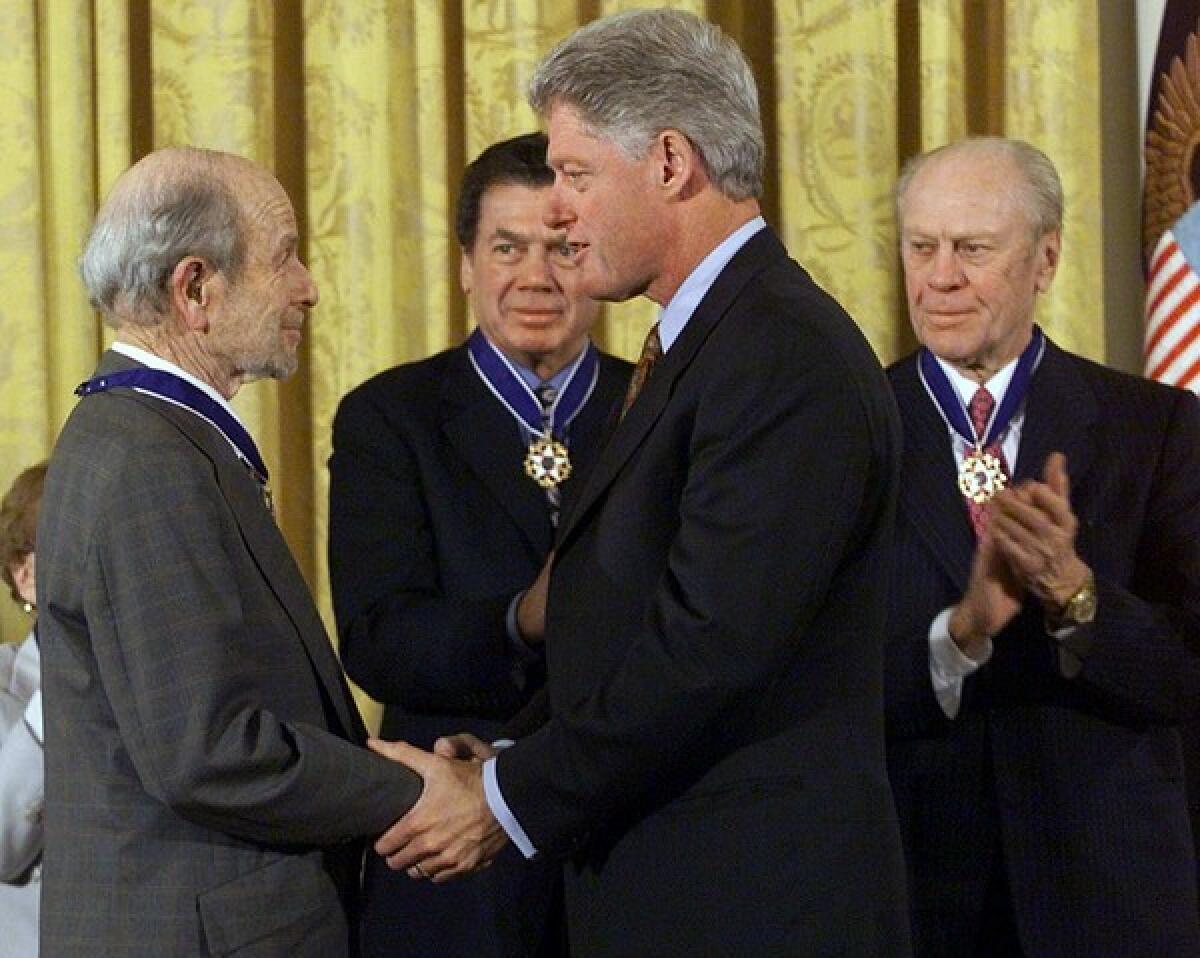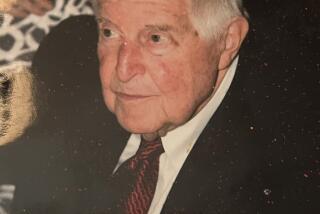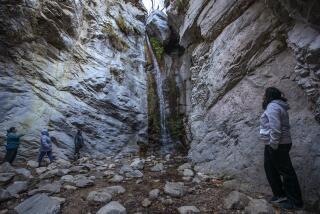Edgar Wayburn dies at 103; longtime Sierra Club president helped double U.S. parkland

Edgar Wayburn, a San Francisco physician and longtime president of the Sierra Club who was credited with protecting more parks and wilderness areas than any other American, has died. He was 103.
Wayburn died Friday at his home in San Francisco of natural causes, said his daughter, Cynthia.
He was the impetus for the establishment of Redwood National Park and pushed to create the Golden Gate National Recreation Area, Point Reyes National Seashore and the Alaska National Interest Lands Conservation Act, among others.
“Edgar Wayburn has helped to preserve the most breathtaking examples of the American landscape. He has saved more of our wilderness than any other person alive,” President Clinton said in 1999 when he presented Wayburn with the country’s highest civilian honor, the Presidential Medal of Freedom.
“He wasn’t a paid professional conservationist,” Bruce Hamilton, deputy executive director of the Sierra Club, told The Times on Sunday. He called Wayburn a “citizen conservationist” who used a combination of passion, perseverance and moral persuasion to preserve lands for future generations.
In 2006, as Wayburn prepared to celebrate his 100th birthday, he tried to put his environmental career in perspective.
“At that time we didn’t have much dedication of land compared to what we have today. There was a great deal that hadn’t been done. So the opportunities were there for doing more,” he told The Times. But “people are having a much harder time today to accomplish similar things.”
Wayburn was born Sept. 17, 1906, in Macon, Ga. He graduated from the University of Georgia in 1926 and from Harvard Medical School in 1930.
He moved to California to start his medical career and returned after four years in the Army Air Forces during World War II. “San Francisco, I thought, was the place to be,” he told the San Francisco Chronicle in 2006. “It was California.”
Cynthia Wayburn said her father started traveling to California “when he was a very little boy” with his mother, who was from California. He joined the Sierra Club in 1939 so he could go on the group’s burro trips into the Sierra.
In 1946, he met Peggy Elliott. They went hiking on Mt. Tamalpais, just north of San Francisco, for their first date and married in 1947. She too became an environmentalist. “On all my adventures, Peggy was with me,” Wayburn told the Chronicle in 2006.
They first visited Alaska in 1967, scouting locations for new national parks. In 1980, President Carter signed the National Interest Lands Conservation Act, creating 10 national parks.
Wayburn “was there at every meeting. He was there when the decisions were made. He was there when the president signed the law. Look, the guy doubled the size of the park system, he doubled the size of the wild and scenic rivers system, he doubled the size of the wilderness system,” Hamilton told The Times in 2006. “It’s mind-boggling.”
Wayburn was awarded the Albert Schweitzer Prize for Humanitarianism in 1995.
“Without Dr. Wayburn’s leadership and his imagination, the Bay Area would be quite a different place,” Rep. Nancy Pelosi told Sierra magazine in 1999. “Visually, recreationally, culturally -- in every way -- Dr. Wayburn made a tremendous difference.”
Wayburn, who also taught at Stanford and UC San Francisco, retired from his medical practice in 1983, his daughter said. He was named honorary Sierra Club president in 1993.
“Whenever we encroach on the natural world, we crop the boundaries of our own existence as humans,” he wrote in his 2004 book “Your Land and Mine: Evolution of a Conservationist.”
In addition to his daughter Cynthia, he is survived by daughters Diana and Laurie, son William and three grandchildren. Peggy Wayburn died in 2002.
More to Read
Start your day right
Sign up for Essential California for the L.A. Times biggest news, features and recommendations in your inbox six days a week.
You may occasionally receive promotional content from the Los Angeles Times.






